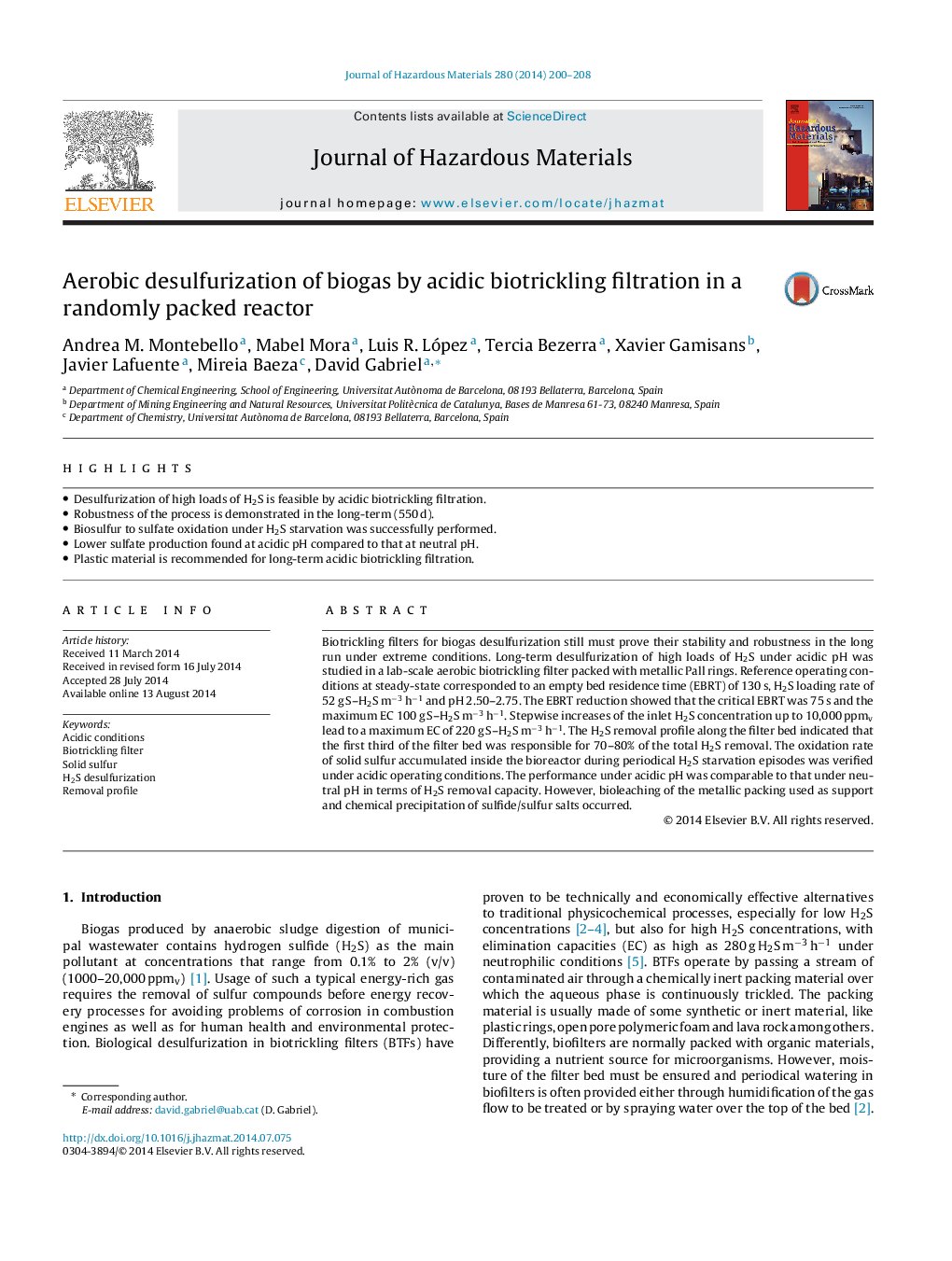| Article ID | Journal | Published Year | Pages | File Type |
|---|---|---|---|---|
| 6971354 | Journal of Hazardous Materials | 2014 | 9 Pages |
Abstract
Biotrickling filters for biogas desulfurization still must prove their stability and robustness in the long run under extreme conditions. Long-term desulfurization of high loads of H2S under acidic pH was studied in a lab-scale aerobic biotrickling filter packed with metallic Pall rings. Reference operating conditions at steady-state corresponded to an empty bed residence time (EBRT) of 130 s, H2S loading rate of 52 g S-H2S mâ3 hâ1 and pH 2.50-2.75. The EBRT reduction showed that the critical EBRT was 75 s and the maximum EC 100 g S-H2S mâ3 hâ1. Stepwise increases of the inlet H2S concentration up to 10,000 ppmv lead to a maximum EC of 220 g S-H2S mâ3 hâ1. The H2S removal profile along the filter bed indicated that the first third of the filter bed was responsible for 70-80% of the total H2S removal. The oxidation rate of solid sulfur accumulated inside the bioreactor during periodical H2S starvation episodes was verified under acidic operating conditions. The performance under acidic pH was comparable to that under neutral pH in terms of H2S removal capacity. However, bioleaching of the metallic packing used as support and chemical precipitation of sulfide/sulfur salts occurred.
Keywords
Related Topics
Physical Sciences and Engineering
Chemical Engineering
Chemical Health and Safety
Authors
Andrea M. Montebello, Mabel Mora, Luis R. López, Tercia Bezerra, Xavier Gamisans, Javier Lafuente, Mireia Baeza, David Gabriel,
